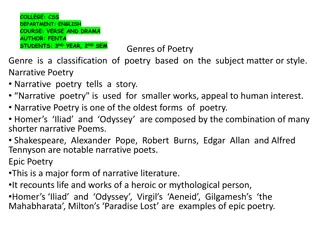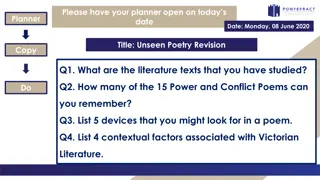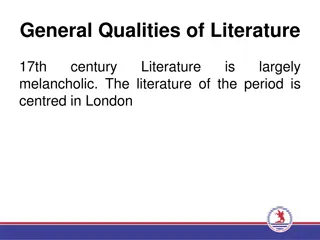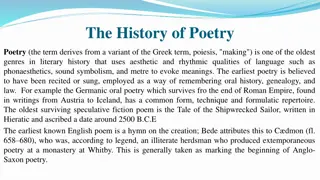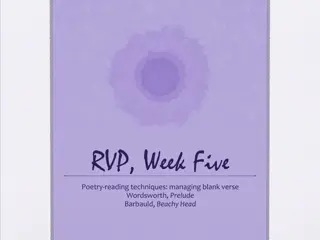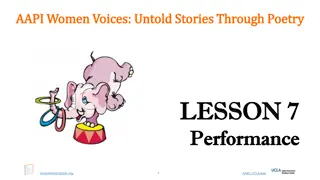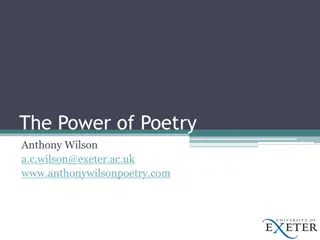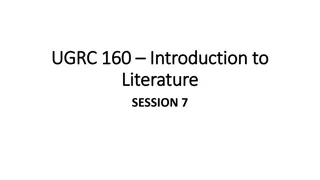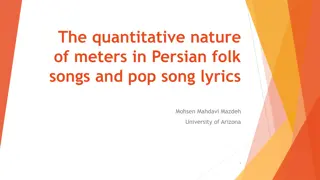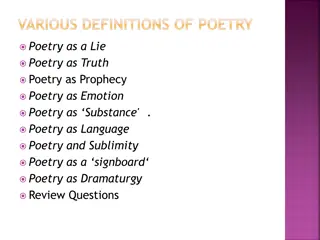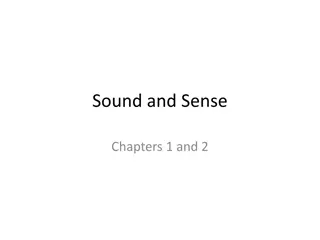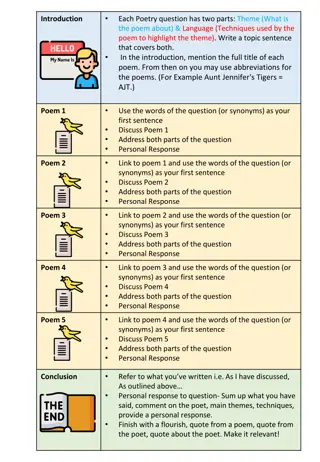Exploring Common Themes in Poetry Analysis
The task involves analyzing common themes in two poems, identifying how they are depicted in each, and referring to a third poem to demonstrate similar themes. The goal is to quote, analyze, and link these themes across the poems, showcasing a deep understanding of their exploration of bitterness, pain, and love.
Download Presentation

Please find below an Image/Link to download the presentation.
The content on the website is provided AS IS for your information and personal use only. It may not be sold, licensed, or shared on other websites without obtaining consent from the author. Download presentation by click this link. If you encounter any issues during the download, it is possible that the publisher has removed the file from their server.
E N D
Presentation Transcript
The Ferryman s Arms
The 10 Mark Question Commonality First 2 marks identify the commonality: the thing that links both the poems you are using. Make it very clear how it is shown in both poems. Printed Text/Extract Next 2 marks show how this commonality is demonstrated in the poem in front of you. Do this by quoting a relevant section or phrase and then analyse it in detail. Secondary text/Elsewhere The remaining 6 marks are best split into 3 lots of 2 marks OR 2 lots of 3 marks. Referring to the other poem you are using, show how it demonstrates the commonality by quoting a relevant section or phrase and then analyse it in detail. The amount of detail in your analysis will determine whether you get 3 or 2 marks in this section.
Commonality Describe the area of commonality between the poem and the other poem to which you will be referring (2 marks) For example, stating that the poem has clear mood and then a sentence outlining how the subject matter of each poem explores this technique/theme. Both poems portray a menacing and disturbing world. 11:00: Baldovan portrays through imagery the landscape of nightmare with its unfamiliar streets , and in The Ferryman s Arms the place between life and death is explored. I mark for a simple remark about commonality 2 marks for a more well-developed answer.
Printed Text/Extract Make a specific reference (quote or reference) to the poem in front of you in answer to the question (2 marks) - You must make a reference to or quote from the extract and then explain how this extract explores the theme of bitterness or pain. No marks for quote/reference alone 1 mark for brief comment/analysis 2 marks for more well-developed, deeper analysis For example, explain that the poem deals with a sinister mood. In The Ferryman s Arms we are presented with an unsettling place where the speaker is drawn in to the backroom to the worn pool table with its intestinal rumble. The second stanza then sees him waiting on the ghost-like ferry which arrives without breaking the skin of the water. The sea in this poem is also black and foreboding.
Extract/Elsewhere Make 3 references to another poem and link each one to the question by showing how the same theme is explored (6 marks) Refer to one incident or quote and explain how pain of love revealed/developed in that moment (1 mark for basic comment; 2 marks for insightful comment) REPEAT TWICE MORE The points you make do not need to be linked together in any way. You must simply choose 2 to 3 relevant moments and explain how they exemplify the point you made in the commonality section.
Extract/Elsewhere Worrying gets the boy nowhere: ...the bus will let us down in another country... It is as if he has no control and can t do anything to stop it. The metaphor another country implies a foreign place that is unfamiliar to the speaker. This image signifies the poem s transition into a metaphorical world and one that is menacing. The bus the boys travelled on becomes a charred wreck
Question In this poem, Paterson uses an apparently ordinary experience to explore a deeper truth about humanity. By referring to this and another poem or poems by Don Paterson you have studied discuss how he uses poetry to explore the deeper truths behind ordinary experience.
Commonality The Ferryman s Arms and Nil Nil are two poems by Don Paterson. Each of them take an apparently everyday event and turn it into a deeper look at our lives. The Ferryman s Arms would appear to be about a man waiting in an island pub for the Ferry that will fetch him home, however a deeper reading of the text reveals that it could actually be about dying. A similar truth is revealed in Nil Nil when Paterson suggests that everything will fade to nothing through the tale of a declining football team and a devastating spitfire crash during WW2. Both poems then could be read as teaching us about death or nothingness.
Printed Text / Extract (the one in front of you) In The Ferryman s Arms there is a clear reference to death when Paterson writes about being drawn to the pool room like a moth . This simile is effective on two levels. First of all he is comparing himself to a moth and the pool room to a light. This suggests that he can t help himself in finding something to fill ten minutes. On a deeper reading though, the poem has multiple references to Greek mythology and we see that here as a moth represents the soul and we could read it as his soul being taken somewhere. There is another idea of death here as well as the moth is being pulled towards the light just like the western euphemism for death.
Secondary Text(s)/Elsewhere In Nil Nil there is an idea of nothingness or death introduced straight away in the phrase plague of grey bonnets . Here Paterson has used a metaphor and word choice to shape his idea. The plague of grey bonnets is the spectators hats but the word plague suggests they are a disease which will eradicate the football. There are connotations of a plague of locusts which leave nothing behind when finished. The colour grey is also nondescript again hinting at the nothingness to come. .
Secondary Text(s)/Elsewhere At the end of Nil Nil there is a definite image of nothingness or death as the speaker addresses us directly in the phrases failing light, the trail that steadily fades and eventually nirvana and the plot thinning down to a point so thin not even angels can dance on it . Paterson carefully selects specific words here to hint at the nothingness. failing tells us that the light is no longer there, that it is dying out. steadily again repeats this idea that it is definitely declining into nothing. Nirvana is the state of non- being, it is a passive nothingness. The final image shows us that there is nothing left of the story as not even the delicate angels are able to do anything on it as it no longer exists.


